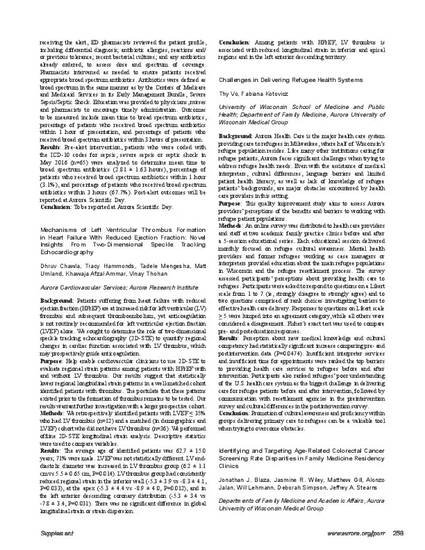
- left ventricle,
- thrombus,
- heart failure,
- ejection fraction,
- strain,
- echocardiography
Background: Patients suffering from heart failure with reduced ejection fraction (HFrEF) are at increased risk for left ventricular (LV) thrombus and subsequent thromboembolism, yet anticoagulation is not routinely recommended for left ventricular ejection fraction (LVEF) alone. We sought to determine the role of two-dimensional speckle tracking echocardiography (2D-STE) to quantify regional changes in cardiac function associated with LV thrombus, which may prospectively guide anticoagulation.
Purpose: Help enable cardiovascular clinicians to use 2D-STE to evaluate regional strain patterns among patients with HFrEF with and without LV thrombus. Our results suggest that statistically lower regional longitudinal strain patterns in a well-matched cohort identified patients with thrombus. The postulate that these patterns existed prior to the formation of thrombus remains to be tested. Our results warrant further investigation with a larger prospective cohort.
Methods: We retrospectively identified patients with LVEF ≤ 35% who had LV thrombus (n = 12) and a matched (in demographics and LVEF) cohort who did not have LV thrombus (n = 36). We performed offline 2D-STE longitudinal strain analysis. Descriptive statistics were used to compare variables.
Results: The average age of identified patients was 62.7 ± 15.0 years; 71% were male. LVEF was not statistically different. LV end-diastolic diameter was increased in LV thrombus group (6.2 ± 1.1 cm vs 5.5 ± 0.65 cm, P = 0.014). LV thrombus group had consistently reduced regional strain in the inferior wall (-5.3 ± 3.9 vs -8.3 ± 4.1, P = 0.033), at the apex (-5.3 ± 4.4 vs -8.9 ± 4.0, P = 0.012), and in the left anterior descending coronary distribution (-5.3 ± 3.4 vs -7.8 ± 3.4, P = 0.031). There was no significant difference in global longitudinal strain or strain dispersion.
Conclusion: Among patients with HFrEF, LV thrombus is associated with reduced longitudinal strain in inferior and apical regions and in the left anterior descending territory.
Chawla D, Hammonds T, Mengesha T, Umland M, Ammar KA, Thohan V. Mechanisms of left ventricular thrombus formation in heart failure with reduced ejection fraction: novel insights from two-dimensional speckle tracking echocardiography. J Patient Cent Res Rev. 2017;4:258.
